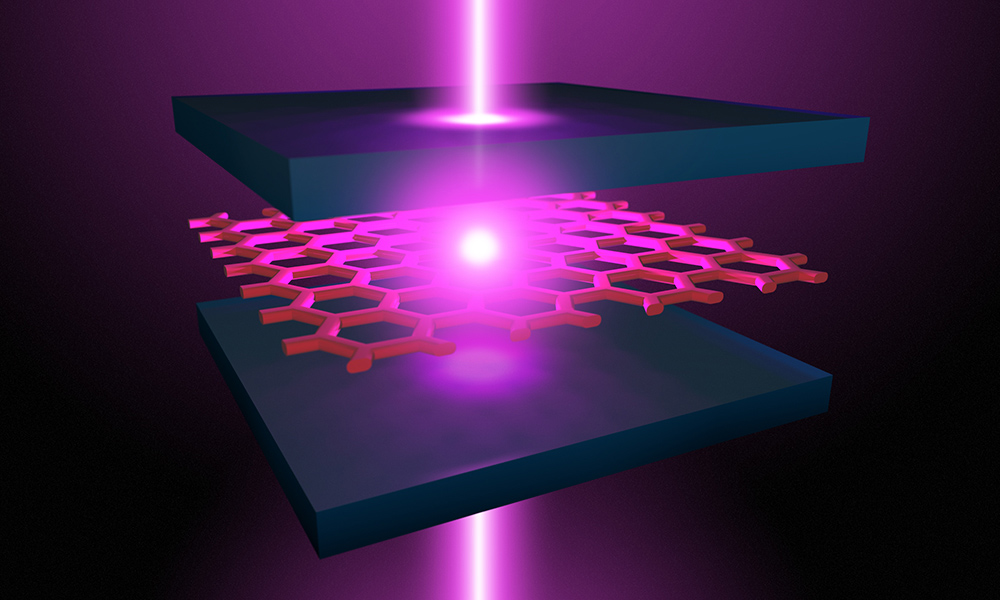January 3, 2018
Most objects react in predictable ways when force is applied to them—unless they have “negative mass.” And then they react exactly opposite from what you would expect.
Now University of Rochester researchers have succeeded in creating particles with negative mass in an atomically thin semiconductor, by causing it to interact with confined light in an optical microcavity.
This alone is “interesting and exciting from a physics perspective,” says Nick Vamivakas, an associate professor of quantum optics and quantum physics at Rochester’s Institute of Optics. “But it also turns out the device we’ve created presents a way to generate laser light with an incrementally small amount of power.”
The device, described in Nature Physics, consists of two mirrors that create an optical microcavity, which confines light at different colors of the spectrum depending on how the mirrors are spaced.
Researchers in Vamivakas’ lab, including co-lead authors Sajal Dhara (now with the Indian Institute of Technology) and PhD student Chitraleema Chakraborty, embedded an atomically thin molybdenum diselenide semiconductor in the microcavity.
The semiconductor was placed in such a way that its interaction with the confined light resulted in small particles from the semiconductor—called excitons—combining with photons from the confined light to form polaritons.
“By causing an exciton to give up some of its identity to a photon to create a polariton, we end up with an object that has a negative mass associated with it,” Vamivakas explains. “That’s kind of a mind-bending thing to think about, because if you try to push or pull it, it will go in the opposite direction from what your intuition would tell you.”
Other research groups have been experimenting with similar devices, Vamivakas says, but this is the first device to produce particles with negative mass.
Though applications are “still down the road,” Vamivakas adds, his lab will continue to explore:
- How the device might serve as a substrate for producing lasers. “With the polaritons we’ve created with this device, the prescription for getting a laser to operate is completely different,” Vamivakas says. “The system starts lasing at a much lower energy input” than traditional lasers now in use.
- The physical implications of creating negative mass in the device. “We’re dreaming up ways to apply pushes and pulls—maybe by applying an electrical field across the device—and then studying how these polaritons move around in the device under application of external force.”
The research, funded by the Air Force Research Laboratory, was initiated with funding from Rochester’s University Research Award program, which provides seed money to promising, high-risk projects.
Other coauthors include Gary Wicks, professor of optics; PhD students Liangyu (Claude) Qiu and Kenny Goodfellow in Vamivakas’ Quantum Nanophotonics Group; and PhD student Trevor O’Loughlin, all of the Institute of Optics.














